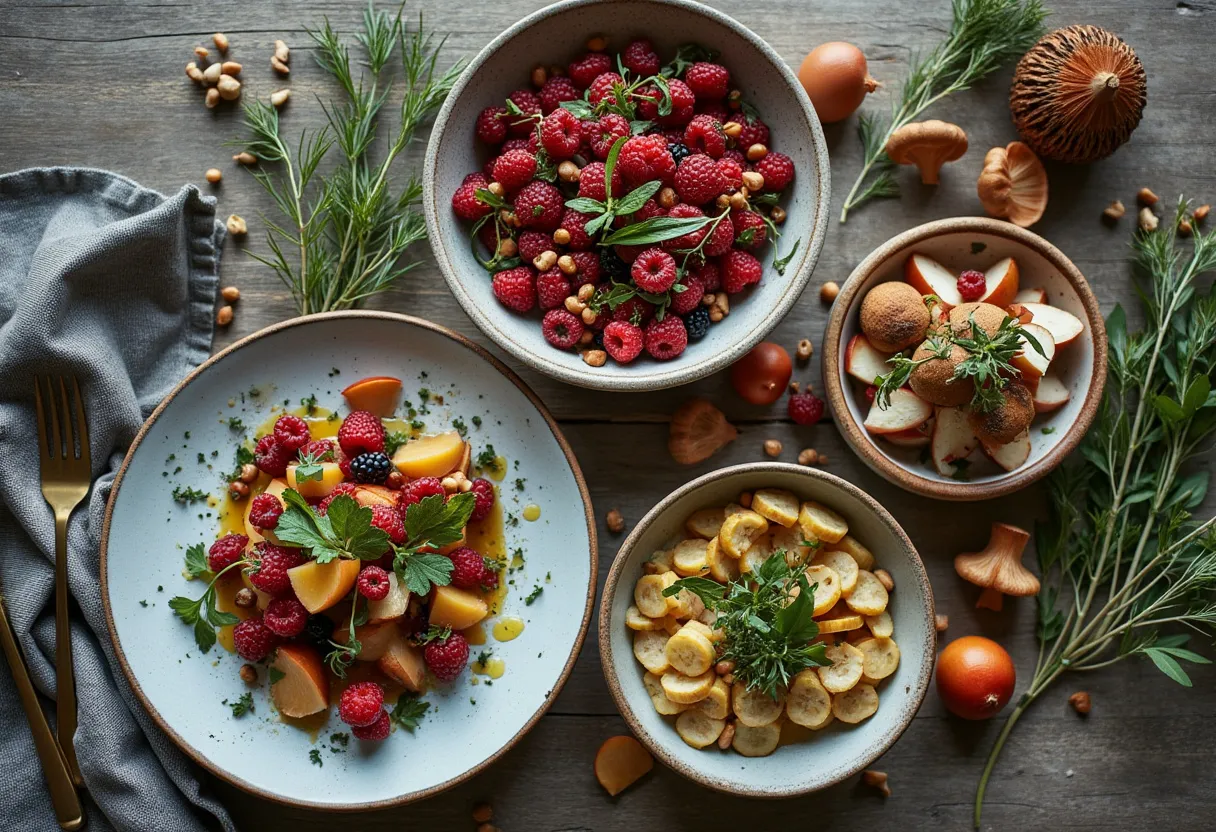
How to Incorporate Foraged Ingredients into Modern Scandinavian Recipes
Published on 9/21/2024
Emma Johansson • 9/21/2024
Integrating foraged ingredients into your culinary creations is a wonderful way to connect with nature and embrace the true essence of Scandinavian cuisine. By incorporating these ingredients, you honor both the simplicity of traditional flavors and the innovative spirit of modern cooking. As a chef focused on sustainable practices, I'm excited to guide you on this culinary journey.
Understanding the Appeal of Foraging
Foraging is more than just sourcing ingredients; it’s about immersing oneself in the landscape and the rhythm of the seasons. In the Nordic countries, where nature is both abundant and dramatic, foraging has long been a way of life. Beyond sustainability, foraging brings a freshness and uniqueness that cultivated produce often lacks. Plus, the thrill of discovering wild mushrooms or aromatic herbs offers a rewarding and mindful experience.
Key Foraged Ingredients in Scandinavian Cuisine
Scandinavian forests and coasts are filled with edible treasures. Here are some key foraged ingredients that you can incorporate into your recipes:
- Wild berries: Lingonberries, blueberries, and cloudberries add tartness and vibrant color.
- Mushrooms: Chanterelles and porcini bring earthy flavors and textures.
- Sea herbs: Sea purslane and orach add a salty crunch, perfect for coastal dishes.
- Wild herbs: Common nettle and wood sorrel provide unique flavor profiles with a hint of lemon.
How to Identify and Harvest Foraged Ingredients
Foraging requires a respectful and informed approach. Before you begin, educate yourself about local edible plants and potential lookalikes. Use guides or apps to aid identification, and when in doubt, forage with an experienced guide. Harvest sustainably by taking only what you need and leaving the habitat undisturbed — this allows plants to regenerate and supports biodiversity.
Incorporation into Modern Recipes
Once your basket is filled with nature’s bounty, the next step is to weave these ingredients into modern recipes. Here are some ideas on how to do this:
Highlighting Unique Flavors
Allow the foraged ingredients to be the star of the dish by keeping the preparations simple. For instance, a warm salad with wild herbs and mushrooms can be dressed with a light vinaigrette to enhance, not overpower, their natural flavors. Use a cooking timer to ensure you don't overcook these delicate ingredients.
Pairing with Seasonal Produce
Incorporate seasonal vegetables to complement the flavors of your foraged additions. Pair wild berries with garden-grown roots like carrots or beets to balance acidity with sweetness.
Experimenting with Preservation
Preserving foraged ingredients through techniques like pickling or drying can extend their seasonal availability. Pickled wild berries make a tangy garnish for savory dishes, while dried sea herbs can infuse broths with a deep umami.
Final Thoughts on the Art of Foraging
Foraging not only enhances your culinary repertoire with the genuine flavors of the Nordic wild, but also fosters an appreciation for sustainable food practices. Remember, each time you forage, you are participating in an ancient tradition that celebrates the bounty of nature.
Embrace your inner adventurer, and let the landscapes of Scandinavia inspire your next culinary creation.
Emma Johansson
Food Scientist and Blogger | I've been cooking
Emma was born and raised in Stockholm, Sweden, where her family placed a strong emphasis on clean, simple flavors and sustainable eating. After studying food science at Lund University, Emma began exploring modern interpretations of traditional Scandinavian dishes. She now specializes in combining local, seasonal ingredients with contemporary culinary techniques to create minimalist, yet flavorful, meals. Emma is passionate about sustainable food practices and often incorporates foraged ingredients into her recipes. She runs a blog focused on modern Scandinavian cuisine and its relationship with the environment.